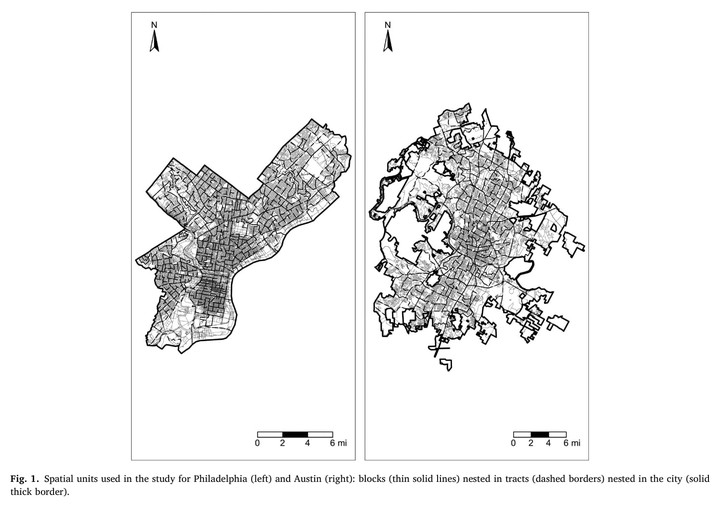Reinvestigating the relationship between cities and the spatial distribution of robbery
A tale of eight cities

Abstract
Purpose- The law of crime concentration suggests cities have almost no impact on the spatial distribution of crime. This study reinvestigates the relationship between cities and the distribution of crime across the various micro-places and neighborhoods which compose these locations. Methods- We observed robbery incidents reported to police departments across eight U.S. cities from 2015 to 2019. We calculated the spatial variability of the distribution of robberies attributed to census blocks (i.e., micro-places), census tracts (i.e., neighborhoods), and cities (i.e., macro-places) using variance partitioning techniques with multi-level negative binomial regression models. Results- Our findings are mixed on the relationship between cities and the spatial distribution of robbery incidents. The descriptive analyses suggest a moderate influence of cities on measures of crime concentration. One of our modeling strategies estimates a larger impact while another strategy observes almost no contribution of cities to the total spatial variability. Conclusions- This study supports previous research which demonstrates there are overwhelming similarities in the distribution of crime between cities and micro-places account for most of the spatial variability of patterns. While cities do not appear to have a major influence on distributions, future research should continue to clarify these mixed findings and provide a more compelling theoretical account of this relationship.